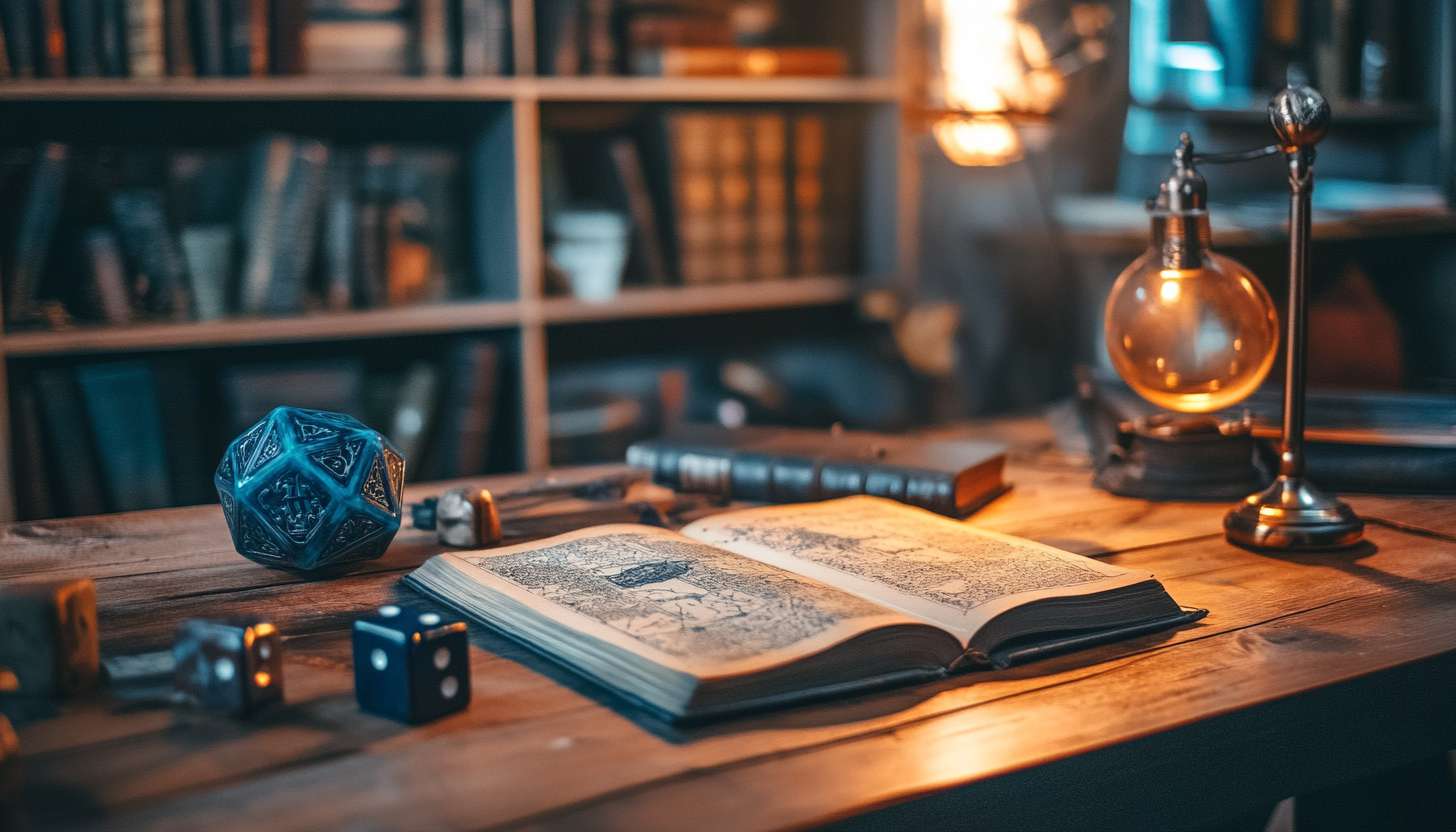Dungeons & Dragons (D&D) is a tabletop role-playing game (RPG) with a rich history. Created in the early 1970s by Gary Gygax and Dave Arneson, it revolutionized the game. Inspired by wargaming and fantasy literature, D&D introduced a new way of playing, combining storytelling and rules. The popularity of the game made it have numerous editions and lengthy versions. Dungeons and Dragons logo remains one of the best RPGs, which has shaped the gaming market and influenced an endless number of adventures.
Part 1: Meaning and History
Dungeons & Dragons (D&D) is a legendary tabletop role-playing game (RPG). It created in the early 1970s by two avid gamers and fantasy enthusiasts, Gary Gygax and Dave Arneson. They inspired by wargames, fantasy literature, and their own imaginative storytelling. In 1974, the first edition of D&D published by Gygax’s company Tactical Studies Rules (TSR).
Rise of Dungeons & Dragons
The popularity of Dungeons and Dragons logo grew rapidly due to word of mouth and the emergence of game competitions such as Gen Con. In 1977, TSR released the first hardcover rulebook known as the Advanced Dungeons & Dragons (AD&D) system. These books improved the rules, expanded the game world, and spurred more success.
Censorship and Public Scrutiny
In the 1980s, Dungeons & Dragons Basic Set and Dungeons & Dragons Expert Set released, marking a new milestone. The popularity of the game peaked in the early 80s, but at the same time faced controversy. Concerns over the contents of the game, including claims to be conducive to satanic themes, led to public opinion surveillance and even alleged censorship.
Third Edition Revolution (2000)
In 1989, TSR announced the second edition of AD&D, further refining and streamlining the rules. In the mid-90s, however, TSR faced financial difficulties and was eventually acquired by Wizards of the Coast (WotC), a game publisher known for Magic: The Gathering. WotC released a third edition of D&D in 2000, featuring a new rule system that emphasized customization and flexibility.
How 5E Revitalized the D&D Community?
In 2014, Wizards of the Coast released the fifth edition of D&D (5E), aiming to balance accessibility and depth. We returned to the origin of storytelling and role-playing while maintaining a strong rule framework. The 5E system was widely praised for its versatility and connected new generations of players with veteran players.
Part 2: Evolution of the D&D Logo Over the Years
Dungeons & Dragons (D&D) began in 1974 because the logo changes many times. It reflected the game’s growth and evolution every time a new logo creation occurs. The first ones looked like they belonged to a classic fantasy game, whereas Colorful logos are sophisticated and refined. Each one tells a tale of D&D’s evolution. Let’s see how the Dungeons and Dragons logo transformed throughout the years.
2000 – 2008
The initial version of the Dungeons and Dragons logo aimed to harmonize with the game’s story. The designer chose a harmonious weapon (sword) and game title. Blood red, brilliant, elegant, with elongated strokes and black shadows, the phrase was divided into two lines. With the unique interaction of light and shadow, the text was expressed with a flame-like sharp-edged element.
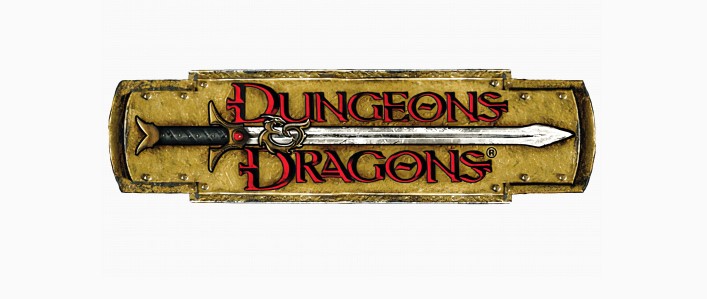
2008 – 2014
The first Dungeons and Dragons logo boasts complex decorations and incorporates a Gothic aesthetic. It is symbolized by an enchanting golden ampersand reminiscent of the style, design and mythical dragon form of the inscription. All lettering is capitalized, especially the initial “D” is emphasized, effectively forming an abbreviation of D&D. The end of E, “” D, “” R, “” A “is a pointed serif logo fonts that resembles a peak, and” S “is only lower serif. In the center of O, there is a longitudinal diamond shape.
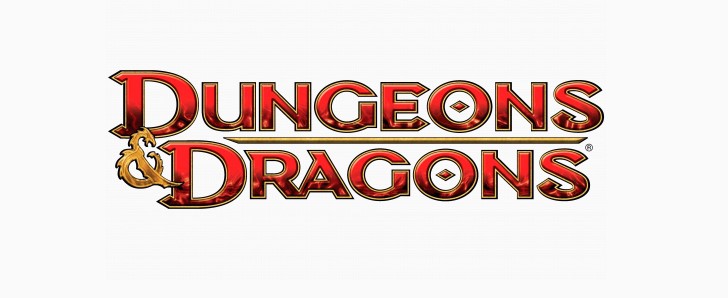
2014 – Present
The Dungeons and Dragons logo divided into two parts, one is graphic and the other is text. The phrase spans two lines, the letters decorated with red, and decorated with lines similar to a needle-like protrusion. In this iteration, the lettering changed, larger, clearer, and spaced. Noteworthy is that the combination of “RA” closely coupled because “R” and “A” share their feet.
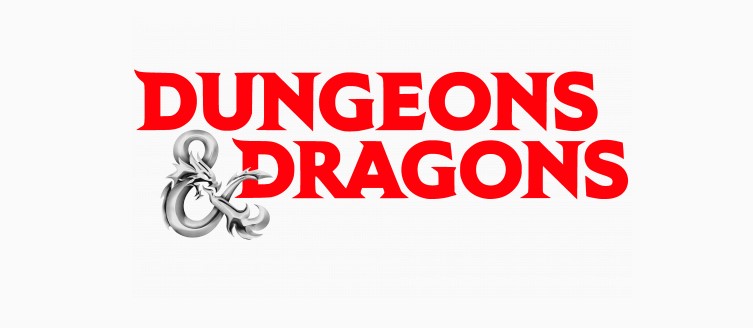
Colors and fonts
The combination of red and silver on white ground gives a fresh yet powerful and mysterious impression. After the addition of new logo colors to the Dungeons & Dragons palette, the timeless refinement became clearer and more rigorous. In the upper-case inscriptions, the lines are sharp and thin, perfectly balancing the thickness and stability of the main characters. The lines in D ” also slightly curved, playful and elegant.
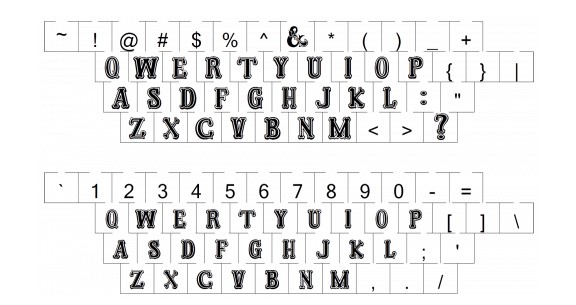
Part 3: Arvin AI – Enhancing Your D&D Experience
Technology has revolutionized tabletop gaming, and Arvin AI simplifies playing D&D. It assists players in character creation, campaign management, and generating story ideas. Dungeon Masters receive helpful tools to facilitate smoother game sessions. New or veteran, Arvin AI maintains the emphasis on fun and creativity. With AI support, players can indulge in storytelling and adventure without worrying about game mechanics.
Key Features of Arvin AI
- Character Creation: Facilitates quick creation of individual characters.
- Campaign Management: Aids Dungeon Masters in planning game sessions.
- Storytelling Tools: Provides ideas and assists in plotting thrilling adventures.
- World-Building Aid: Facilitates the development of rich settings, cities, and lore for campaigns.
- Encounter Generator: Offers balanced combat and role-playing encounters for fun gameplay.
Steps to Use Arvin AI for making Logo
Step 1: Explore the Arvin AI Design Platform
Launch your web browser and navigate to the logo design page at Arvin AI. This platform is your gateway to creating iconic Dungeons and Dragons logos tailored to your vision.
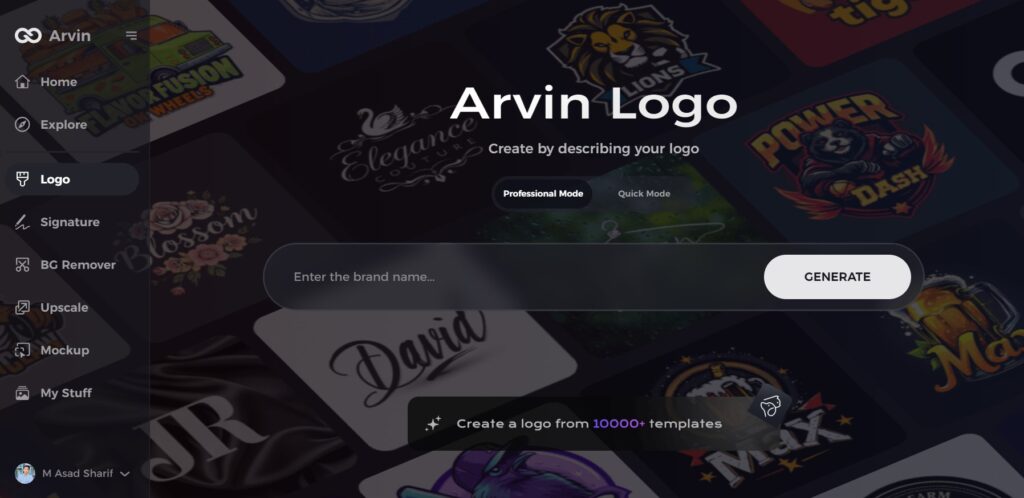
Step 2: Provide Your Hero’s Backstory
Enter essential details such as your Dungeons and Dragons logo’s name, mission, and core values. This information helps the AI craft logos that capture the essence of your superhero’s identity.
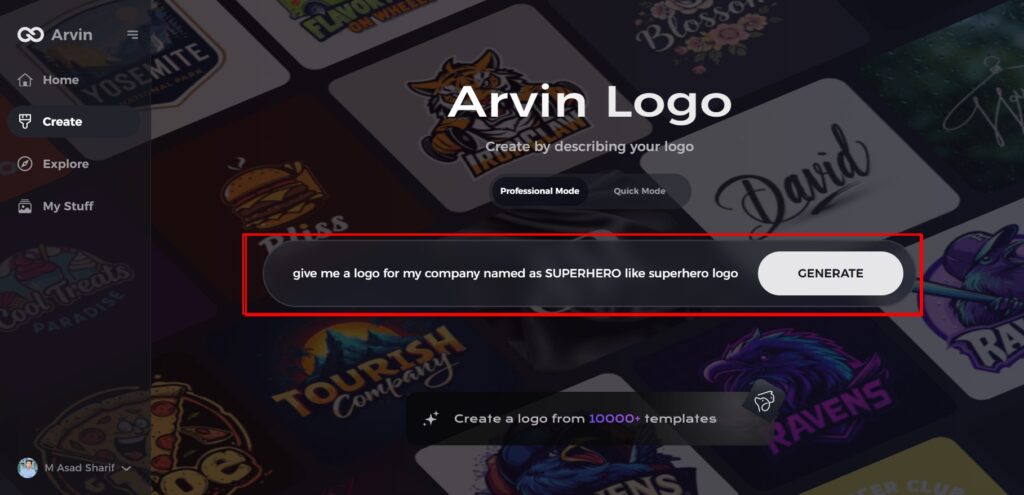
Step 3: Choose Your Hero’s Genre
Select the genre or category that aligns with your Dungeons and Dragons logo’s story—be it sci-fi, fantasy, or action-adventure. This step enables the AI to fine-tune logo concepts for the perfect thematic match.
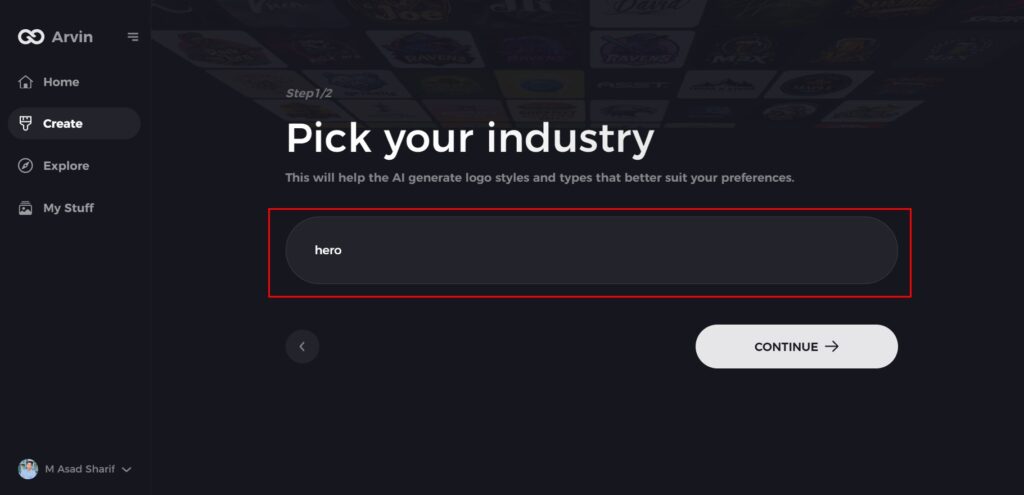
Step 4: Define the Style
Browse through the available logo styles and pick one that resonates with your Dungeons and Dragons logo’s identity. If you’re unsure, skip this step and let the AI draw creative inspiration independently.
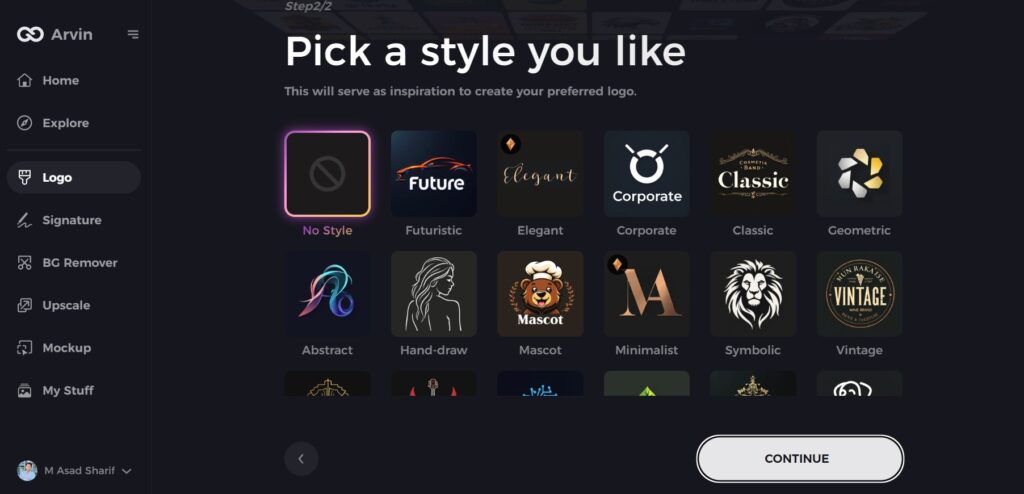
Step 5: Discover Logo Concepts
The AI will generate an array of logo designs based on your inputs. Review these concepts and identify those that align with your Dungeons and Dragons logo’s image and brand.
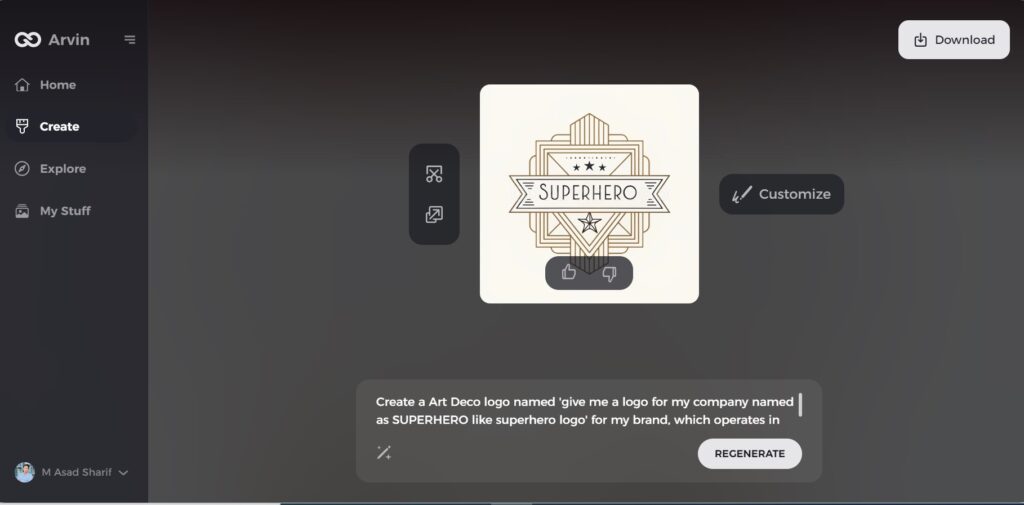
Step 6: Customize Your Logo
Fine-tune your selected logo by adjusting elements such as color schemes, fonts, and symbols. Ensure the design reflects the unique characteristics of your Dungeons and Dragons logo.
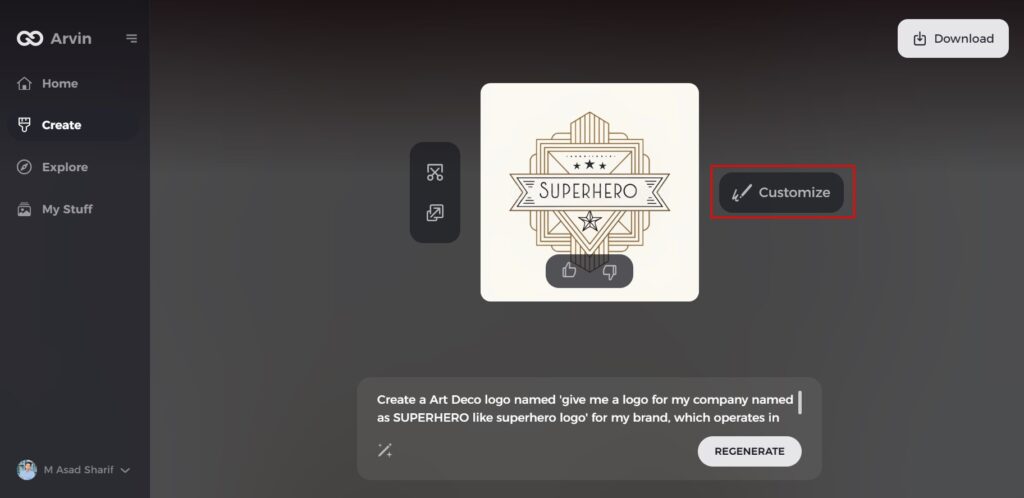
Step 7: Download and Showcase
Once satisfied with the final design, download the logo in high-quality formats like PNG or SVG. These formats are versatile and ready for use on costumes, promotional materials, or digital media.
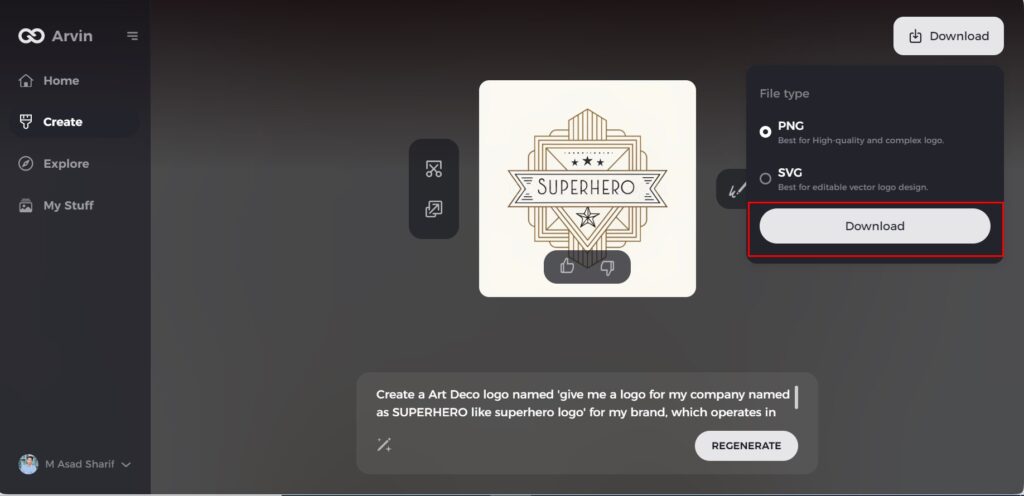
Conclusion
The Dungeons and Dragons logo has evolved with time but still maintains a fantasy touch. The evolution has varied from ancient font to the legendary ampersand dragon, which mirrors the growth of the game. The present logo, introduced in 2014, is easy to recognize and gives D&D a strong identity. A good logo helps to bind the community and make the game popular. Arvin AI complements the experience even more through character creation software, campaign tools, and telling great stories.
FAQs
Is Dungeons and Dragons a brand?
D&D is known beyond the game itself for other D&D-branded products, references in popular culture, and some of the controversies that have surrounded it, particularly a moral panic in the 1980s that attempted to associate it with Satanism and suicide.
Is Dungeons and Dragons expensive?
It doesn’t cost anything to get started playing Dungeons and Dragons. You don’t need to spend a penny on books or accessories because it’s a game fuelled by imagination and storytelling.
When was the current Dungeons and Dragons logo introduced?
Today’s D&D logo, an unconventional ampersand in dragon guise, came in 2014 with the 5th Edition.
How can Arvin AI help with playing D&D?
Arvin AI assists characters in creating character profiles, scheming campaigns, and constructing narrative so everyone may play D&D more easily and with greater delight.

